Lasvit
Visiting Bohemian glassmakers to preview work designed by Maurizio Galante and Arik Levy

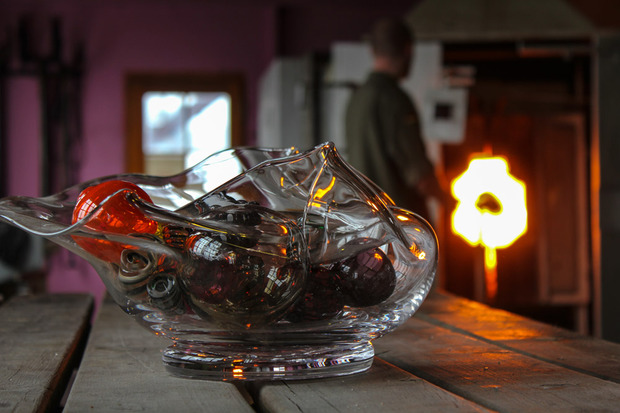
We were recently invited by lighting specialists Lasvit to visit their production sites in Nový Bor, a small town north of Prague in the Czech Republic. We visited two different plants, met designers Maurizio Galante and Arik Levy, and previewed their products that will debut at Milan Design Week. During the trip, we had the chance to see glassmakers using breath and gravity in the perfection of their craft.
The first location was a traditional furnace in the middle of the Bohemian woods where dozens of men work glass in an incredibly hot environment. At the center, the main ovens kept melted glass at 1400º C. Divided in groups of three—one master glassblower and two assistants—craftsmen work at high speeds, rough and elegant at the same time, quickly extracting fragments of melted glass that is then put into wooden moulds and blown with the force of lungs. In a series of choreographed gestures, the artisans reenact an ancestral way of relating to matter. Here we saw the production of Jar, a new lamp designed by Arik Levy.
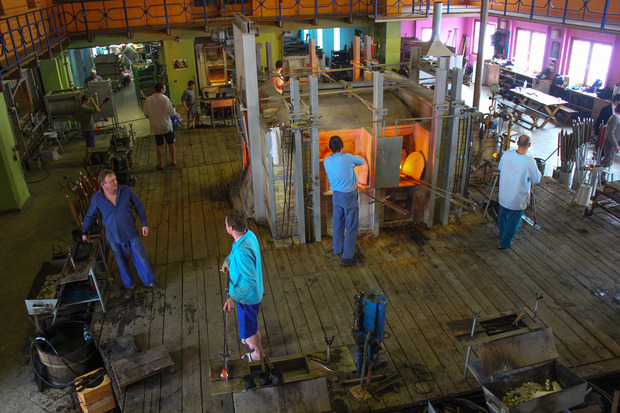
The second plant was completely different, with the environment of a futuristic white laboratory. Every step of production was more contemporary, and the name of the place itself, Kolektiv, indicated that this was a collaborative effort among young people specialized in fusing, painting, grinding and engraving. In a place meant to innovate in the art of glassmaking, we saw Maurizio Galante’s Plisse brought to life.
During this intense day, suspended between a primitive past and a futuristic modernity, we had the chance to talk with both Levy and Galante about their respective projects for Lasvit.
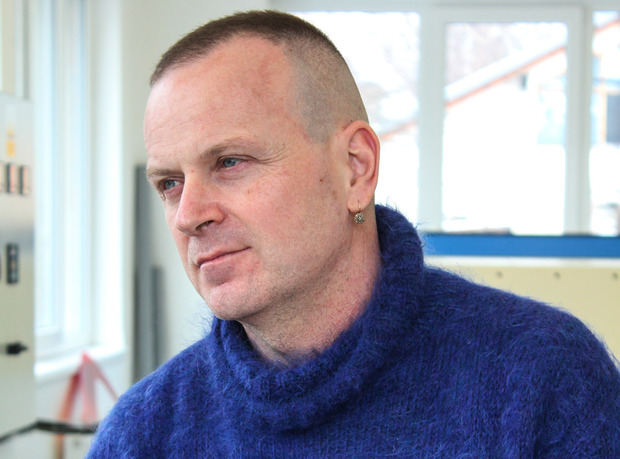
Galante, Italian-born and now based in Paris, is one of the elite few fashion designers working in the world of haute couture. In recent years he has branched out to create everything from furniture, lighting and audio systems, working with companies such as Baccarat and Chopard, to stamps for La Poste France. His Tattoo pouf, Canapé Cactus and Louis XV Goes To Sparta (designed in collaboration with Tal Lancman for Cerruti Baleri) have rapidly become contemporary design icons.
For Lasvit Galante has created Plisse, a lamp that unites the softness of fabrics with the delicacy of glass, transforming the ruffles that define his fashion into a new glass concept.
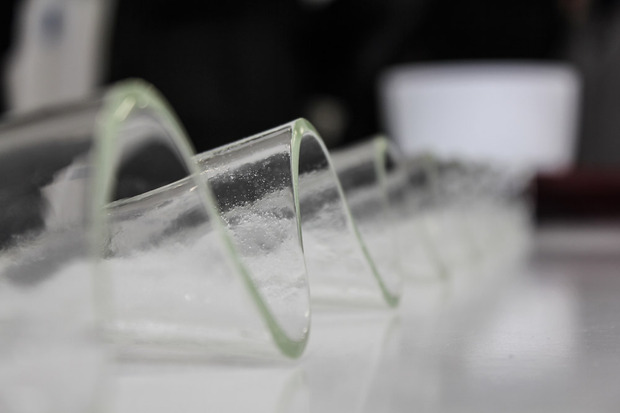
How was this project born?
This project was created with the intention of combining what I’ve always done and continue to do in the fashion with the craftsmanship of glassmaking. The initial idea was to put movement into solid things. I like the idea that the movement could also be transferred to more rigid objects of completely different worlds, such as jewelry and glass.
Before doing the project, had you seen the production? Did you know already the techniques and limitations you were supposed to consider?
When I first visited the furnace and the company, I studied what Lasvit had done before and tried to become part of the collection—all with something that did not exist, something new that was mostly mine. My fashion is very built, very architectural, so it was easy enough to be able to find a meeting point. It’s haute couture that I do; there is so much craft, which is also abundant in the work of Lasvit.
In your atelier stimuli arrive from all over the world—do you feel that you behave as an interpreter who then revises it all in a personal way?
This is what happens during a journey. Sometimes you have a vision or discover something unexpected. For example, the first time I came to Nový Bor, I realized that they work glass in a different way compared to how it’s done in Venice, in different spaces, with different possibilities. So I tried to put together all these points with lines and to provide new answers and do something interesting.
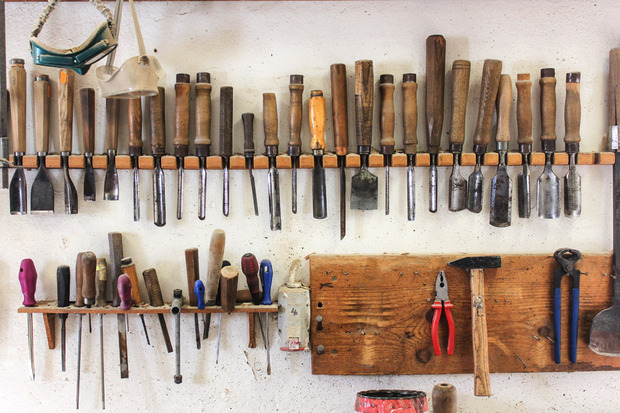
Did you bring Paris to the Czech Republic?
Lasvit is fully projected outward with respect to what is seen here. I tried to make Plisse an “ambassador,” an object able to tell who made it and where it comes from. Undoubtedly there is also a lot of my work here, where I’m from, what I do, France, Italy. But above all there are the emotions, which are the key to my work. Today we do not need anything. What we lack, however, are objects that give us some kind of pleasure.
We have seen in production that the modules of Plisse are born small and then are welded, almost “sewn” together, with a technique that is very reminiscent of fashion. At the same time, the project is highly modular, with a logic closely linked to industrial design. Was this project is born with the ambition to become a family of products?
Undoubtedly, every time you give birth to a creature you want it to have a history and a long life. This idea of modules that can expand and multiply like a virus is part of this logic. In Milan Plisse will be presented on a long wall, but we also imagine to use it on ceilings, to give the impression of living in a seabed, under algae or under the ice.
The glass elements of Plisse are born flat, placed on specially made ceramic curved surfaces, then melted in an oven until you get to their final curved shape. It looks like an ironing process, another component derived from fashion.
Plisse will be presented white and clear—are there planned evolutions in the project through color?
I’d love to work with color shades, from light to dark, which could give the idea of something that lightens up. With glass you can do it.
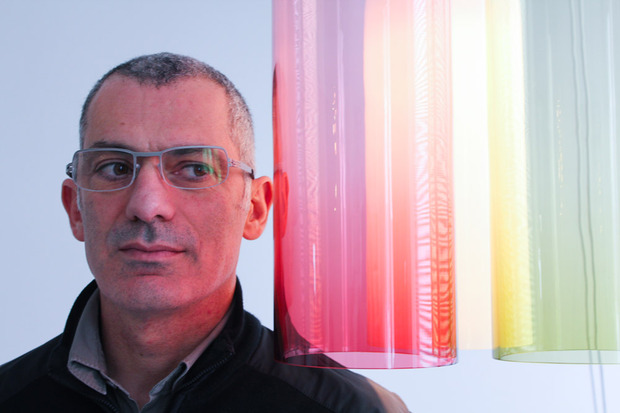
Artist, filmmaker, photographer and designer Arik Levy was born in Tel Aviv and now lives in Paris. His work is based on a strict relationship between objects and functionality, art and design, technology and nature, surface and colors.
Jar is the new lamp he conceived for Lasvit, a very flexible and open project that is mainly meant for public spaces. Even though it is completely handmade in the most traditional furnaces of Nový Bor, there’s a very clear and strong digital allure. In fact the presentation of this collection will be based on the RGB color model, allowing users to create an interesting range of combinations. At the factory, we discussed with Levy the origin and the evolution of his new piece.
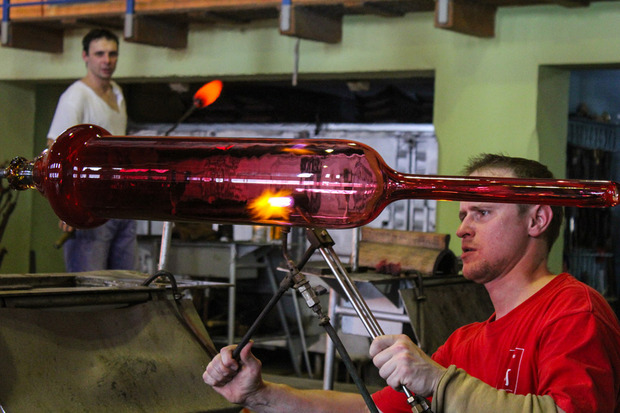
You say that you want to create “ego-friendly” objects. What does that mean exactly?
Ego-friendly is my motto. It means that I create the tools, and the architects, the interior designers or the owners can interpret them and build what they like. Surprisingly enough, when you design objects and you see them not the way you did them exactly—not the way you choose the colors, not the exact finishings—in many cases you have interesting surprises. I remember when I started 20 years ago I was making lights from cardboard. I sent my mother a light and to protect it I packed it with plastic mesh. I traveled to Israel a few months later and I discovered she left it with the mesh, turned the light on and it looked amazing. For me it was a part of packaging, for her it was the lamp: this is ego-friendly.
What about the aspect of color? You went for a RGB color palette, a very basic solution that, depending on how you combine the single elements, can create almost every color.
It’s a basic solution for an endless number of interpretations. I think that color is a question of personal taste; anyone can tell me what’s a beautiful color to them. I think it’s a great possibility to give color variations and a wide range for people to use. If the concept of the light of the object is color-free, then it works in almost every color. If a Ferrari is put in pink it doesn’t work. It is important and relative to integrate that thought about the color potential within the design. Jar is about how the the colors interact with each other with see-through effects and with the light, both natural and artificial.
The shape of Jar is very iconic, clean and may recall the shape of a glass bottle. Was that the starting point?
Actually this configuration seems but doesn’t have the proportions of a bottle. For me it’s a little more technical and sharp, more like a gas cylinder or a diving tank.
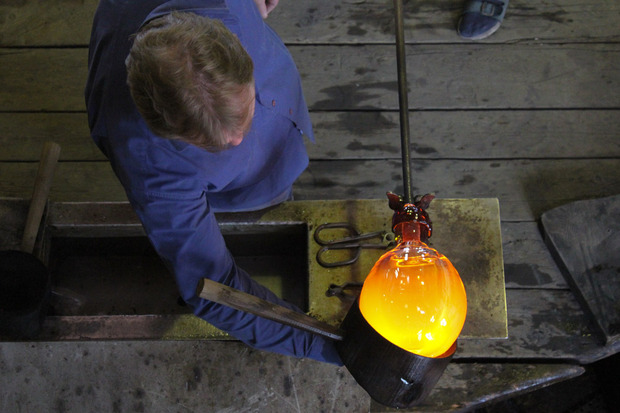
Why did you choose such delicate and pale shades to present at Salone in Milan?
I wanted it to be see-through. I like it when it’s lit but also when it’s not. The object benefits from the surroundings and changes according to the background. If you have a red wall or a Malevich painting, that shines through the piece and creates a new shade.
There’s a very famous book by Leo Lionni called “Little Blue and Little Yellow.” Jar is not really homage to the book, but it’s a sort of primitive but very intelligent primal understanding of what the eye would see, understand and benefit. I wanted that level of sophistication, without powerful opaque colors, that if the environment changes, they don’t change. It’s like a rainbow: it’s transparent, but all the colors are there. There’s a sensation of magic in it, it’s there without being there.
And we come back to the idea of ego-friendly, since there’s more room for interpretation. We are more than open to personalizations. I would love to have someone who wants only olive green or orange or whatever, or different color appearances, or someone who wants to open a restaurant and only create gradients from black to white. I’ve just created the toolbox for people to use and I think that people could take this opportunity.
Images by Paolo Ferrarini












